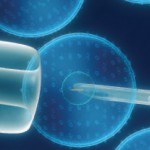

At a meeting I attended recently, I heard a series of dazzling talks on human genetics. The meeting was held in a venerable and majestic city in Europe, but the venue was a modern hotel near the airport. Unlike some European hotels that provide only one towel—a veritable washcloth—this place was downright American in the luxuriousness of the drying equipment. Three large expanses of fluffy white cotton along with hand towels and bars of free soap decorated my bathroom. Apparently, the Green Revolution must be meeting stiff opposition as the once Spartan hotels of old Europe are getting Hiltonesque to meet the demands of travelers who want their towels smelling clean and daisy fresh no matter how much laundry detergent pours into the Rhine, Seine, or Danube.
The talks at the meeting described the striking progress in unraveling the genetics of autoimmune disease. Because of advances in chip technology and bioinformatics, new analytic platforms can assess thousands and millions of snips (SNPs or single-nucleotide polymorphisms) in days (Hours? Minutes?) for the price of pennies. The visionaries in the genetic avant garde claim that it will soon be possible to obtain a person’s full genome sequence for a thousand dollars.
I do not doubt the power of the technology, although I am skeptical about the business model. After all, the charge for a uric acid test was only a few bucks, and this very useful test was dropped from multiphasic screening because it was not considered cost effective. Knowing the powers that be in the business office, I suspect that the cost of a gene screen will skyrocket, especially if each SNP is billed separately for over the 20,000 genes that can be currently assessed.
Along with the boost in the extent of SNP testing, current research demands studies of an ever larger number of patients, with one study presented at the conference involving 100,000 patients to analyze the genetic determinants of height. The magnitude of these studies should not be surprising. Most (perhaps all) human traits are very complex and involve multiple genes and gene–gene interactions of dizzying complexity. Sorting out these patterns will be a heroic effort because of the enormous genetic variation in the population. With the mixing and matching that goes on in the mysterious pairings in human reproduction, genetic studies in the future will involve, to paraphrase the late Carl Sagan, billions and billions of data points.
Although billions and billions is a daunting quantity, the reality of these studies are data sets with trillions and trillions points, or whatever 106 x 105 winds up to be (that’s the number of SNPs times the number of people tested). I have trouble keeping track of experiments with 96 wells in an ELISA plate or 12 lanes in a Western blot. No way could I manage the mass of data needed to harvest, as the geneticists put it, the low-hanging fruit, let alone the high-hanging fruit that a modern genome-wide association study makes possible.
I can just imagine a conversation like the following: ‘Well, Mr. Jones, we just ran your genome and we have good news and bad news. The good news is that you have a cytosine at position number 163 of your TNF gene. The bad news is that it is methylated.’ Good luck in explaining that one.
Benefits of Personalized Medicine?
As several of the speakers at the meeting stated, we are about to enter the era of personalized medicine in which science can predict the likelihood of disease for that part of etiology that is genetic in origin. Much of disease etiology is environmental and for that prediction is less good. Nevertheless, soon we can tell people about their risk for developing rheumatoid arthritis or lupus, assuming that they want to know. Risk profiles will likely only be relative, but such information could be valuable in planning strategies for prevention.
At this point in personalized medicine, things get uncertain because current strategies for disease prevention are limited and often difficult to implement. We all know that the arrows in the quiver of prevention are few: exercise, don’t smoke, don’t eat, and don’t drink (unless you are French, in which case you can guzzle the red stuff until you are 100). Alas, unless you want to stay hermetically sealed in a space suit, bugs of all kind will come your way and mess with your toll receptors, potentially stirring up the mischief known as inflammatory and autoimmune disease.
Hot on the heels of the genetic revolution is the epigenetic revolution. Epigenetics refers to the modification of genes, such as base methylation, which determines how genes are switched on and off. Thus, even if two individuals are genetically identical, changes in the epigenome may determine how heredity plays out to affect the risk for disease. Indeed, as one of the speakers at the meeting described, identical twins discordant for lupus show distinct patterns of base modification in their expressed genomes.
In case you are worried, the technology to characterize the epigenome is also coming down the pike. At present, the throughput is a bit sluggish, but the pace will no doubt accelerate, and soon platforms will be available for genetic and epigenetic chipping. I am not sure how providers will be able to transfer all of this information to their patients. I can just imagine a conversation like the following: “Well, Mr. Jones, we just ran your genome and we have good news and bad news. The good news is that you have a cytosine at position number 163 of your TNF gene. The bad news is that it is methylated.” Good luck in explaining that one.
Throw Genetics to the Wind
At the end of the meeting, the attendees took buses downtown for a farewell party in an old schoolhouse that had been converted for conferences and dinner functions. Unlike the airport, which was situated beneath the roar of jets, the schoolhouse was an imposing building ornately decorated with spires and turrets and felt like old Europe. The banquet room had a high vaulted ceiling of rich mahogany, and the walls were covered with heraldic shields; carved wood heads of Arabs, Indians, and Africans; and statues representing the young girls who were the first female students of the school in the 1800s. From the high windows of the banquet hall, we could look out over the city, whose lights flickered and sparkled as darkness descended, and the chill of European winter forced its way in.
At the end of a lovely dinner, I had a choice of kirsch, grappa, or cognac. I should have passed on an after-dinner drink because these libations are distillates filled with toxic chemicals worthy of the Love Canal. I am sure that one of these potions is more suited to my genetics than another; no doubt all three could do serious damage to my epigenome, scorching my intestines or pickling my brain. Nevertheless, I had just attended a wonderful meeting, I was with good friends, and my spirits were soaring under the influence of the Prosecco and Amarone that I had downed earlier in the evening.
While an ounce of prevention can be worth a pound of cure, it can also be a downer. So, imbued with the spirit of personalized matter and emboldened with the power of free will, I did what many people do having pondered their genetics. I decided to drink. I took the grappa.
Dear reader. Life is short. Savor it. Destiny can wait until tomorrow.
Dr. Pisetsky is physician editor of The Rheumatologist and professor of medicine and immunology at Duke University Medical Center in Durham, N.C.

